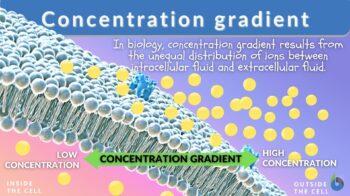
Concentration gradient
n., plural: concentration gradients
[ˌkɑnsənˈtɹeɪʃən ˈɡɹeɪdiənt]
Definition: gradient that forms from unequal concentrations between two solutions
Table of Contents
What is a concentration gradient? A gradient is a measure of how steep a slope is. Thus, a concentration gradient would be associated with the extent of the differences in the concentrations from one area to another. Let us understand what concentration gradient is, and its essence in biology.
Concentration Gradient Definition
Concentration gradient refers to the gradual change in the concentration of solutes in a solution as a function of distance through a solution. A solution, essentially, has two major components, the solvent (the dissolving component, e.g. water) and the solute (the particles that are dissolvable by the solvent).
In biochemistry, concentration pertains to the amount of a sub-component of a solution, e.g. the amount of solutes in a solution. Gradient, in turn, is a term that in general refers to the progressive increase or decrease of a variable with respect to distance. In this regard, a concentration gradient would be the outcome when the amounts of solutes between two solutions are different.
In biology, a concentration gradient results from the unequal distribution of particles, e.g. ions, between two solutions, i.e. the intracellular fluid (the solution inside the cell) and the extracellular fluid (the solution outside the cell). This imbalance of solutes between the two solutions drives solutes to move from a highly dense area to a lesser dense area. This movement is an attempt to establish equilibrium and eliminate the imbalance of solute concentrations between the two solutions.
Watch this vid on concentration gradients:
Etymology: The term concentration comes from the word concentrate, from the French concentrer, from con– + center, meaning “to put at the center”. The word gradient comes from the Latin gradiens, from gradior, meaning “to step” or “to walk”. Synonym: density gradient.
Biological Transport
In biological systems, there are two major transport phenomena: passive transport and active transport. In passive transport, particles (e.g. ions or molecules) are transported along the concentration gradient. This means that the particles move from areas of high concentrations to areas of low concentrations. Because of the passive movement of particles no chemical energy is spent as it takes place. Examples of passive transport are simple diffusion, facilitated diffusion, filtration, and osmosis. Conversely, active transport is the transport of particles against the concentration gradient. This means that the particles are moved from an area of low concentration to an area of high concentration. Because of this, chemical energy is spent to move the particles to an area that is already saturated or dense with similar particles.
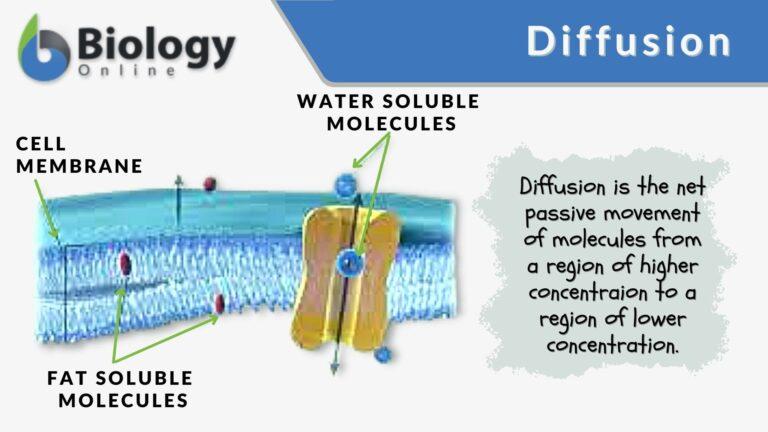
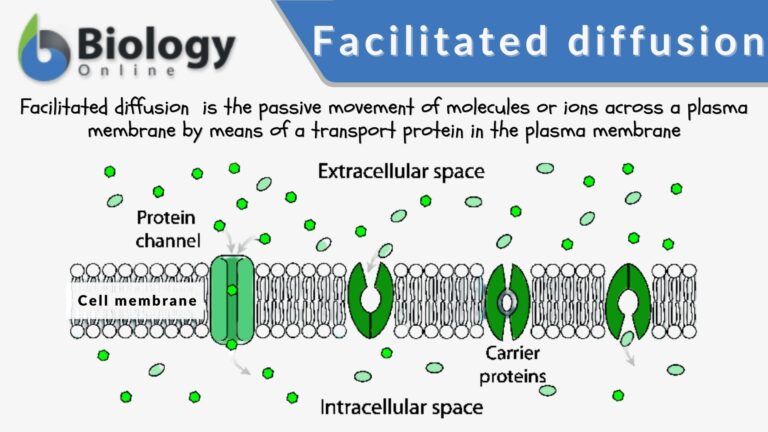
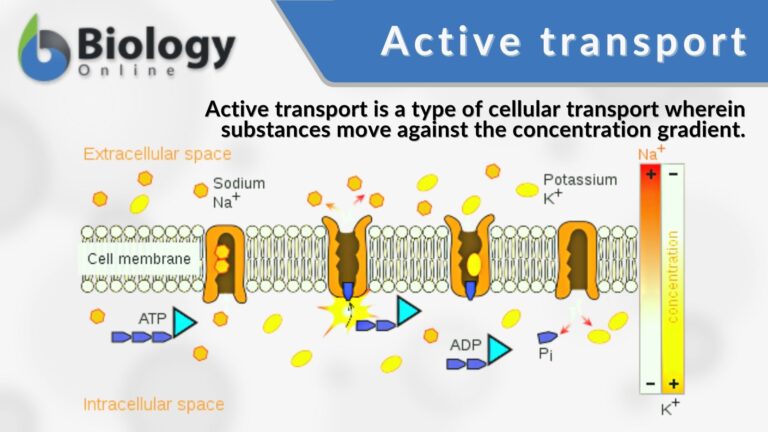
Concentration Gradient and Diffusion
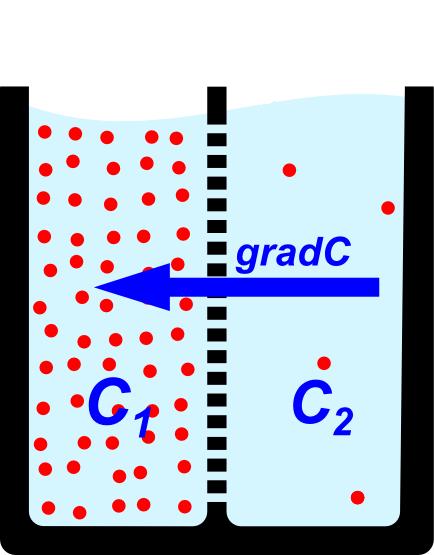
Simple diffusion is a type of passive transport that does not require the aid of transport proteins. Since the movement is downhill, i.e. from an area of greater concentration to an area of lower concentration, a concentration gradient is enough to drive the process. A neutral net movement of particles will be reached when the concentration gradient is gone. That means that the equilibrium between the two areas is reached. The amount of particles or solutes in one area is similar to that of the other area.
In facilitated diffusion, the process needs a transport protein. Similar to simple diffusion, it is driven by a concentration gradient and equilibrium is attained when there is no longer a net movement of molecules between the two areas.
In many cases, though, the concentration gradient is not the lone factor in passive transport. For example, the presence of two different solutions on the external surface of the cell would have two different degrees of saturation and solubility. For instance, small lipophilic molecules and nonpolar gas molecules could diffuse more readily through the lipid bilayer of the cell membrane than polar molecules, including water.
Concentration Gradient and Osmosis
One of the molecules that require a transport protein to move down the concentration gradient across a biological membrane is water. Osmosis is similar to diffusion as both of them are characterized by a downhill movement. The difference lies though in the particle that moves. In diffusion, it is about the movement of solutes. In osmosis, it is about the movement of the solvent, i.e. water molecules. In osmosis, the water molecules move from an area of high concentration to an area of low concentration. The pressure that drives the water molecules to move in such a manner is referred to as the osmotic gradient. But in order to move across the cell membrane, it has to use a channel protein in the cell membrane. This transport protein spans the entire membrane and provides a hydrophilic channel through which water molecules could pass through. Water is a polar molecule. Thus, it cannot easily pass through the hydrophobic lipid bilayer component of the cell membrane. It will, therefore, need a transport protein to move across. Nevertheless, since the movement is downhill, no chemical energy is required.
Concentration Gradient in Active Transport
For active transport, the particles are transported in an uphill movement. This means that they move against their concentration gradient, i.e. from an area of lower concentration to an area of higher concentration. Because the movement is uphill, this process requires chemical energy. Active transport may be primary or secondary.
A primary active transport is one that uses chemical energy (e.g. ATP) whereas a secondary active transport uses an electrical gradient (i.e. a gradient resulting from the difference in charge across a membrane) and a chemical gradient (i.e. a gradient formed from the unequal concentrations of solutes). An electrochemical gradient is a gradient of electrochemical potential for an ion that can diffuse into or out of the cell via the cell membrane. Since ions carry an electric charge, their movement into and out of the cell affects the electric potential across the membrane. If a charge gradient occurs (i.e. a gradient formed from an unequal distribution of electrical charges), this incites the ions to diffuse downhill with respect to charges until equilibrium on both sides of the membrane is achieved. (1)
Examples of Concentration Gradient
Ion gradients
Ion gradients, such as Sodium/Potassium gradients, are an example of a concentration gradient essential to cells. Neurons, for instance, have a Sodium/Potassium pump that they use to maintain a resting membrane potential (usually ranging from -60 to -90mV). Two major key players are sodium (NA+) and potassium (K+) ions. First, 3 Na+ ions inside the cell bind to the pump protein. Second, ATP phosphorylates the pump causing it to change its conformation, thereby releasing the 3 Na+ ions to the outside of the cell. Finally, one K+ ion from the outside binds to the pump protein and then released into the cell. The phosphate from ATP is also released causing the pump protein to return to its original conformation. Through this mechanism, the cell is able to maintain its inside to be more negative than the outside. (2) Neurons need this for action potential formation.
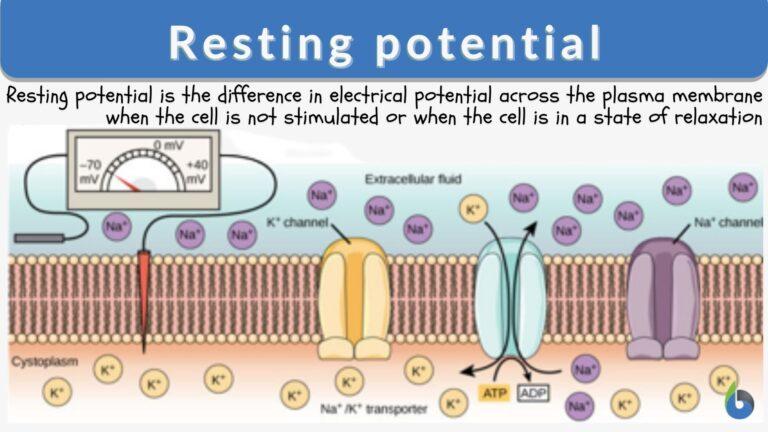
Proton gradients
A proton gradient (also called H+ gradient) is a gradient that forms from differences in proton concentration between the inside and outside of a biological membrane. A proton pump is the membrane protein that transports protons (H+) across a membrane and is thereby responsible for building up a proton gradient. This gradient is essential to many organisms as it stores energy. For instance, it is the mechanism used in oxidative phosphorylation of cellular respiration. The proton pump transports protons from the mitochondrial matrix to the inter-membrane space. As a result, there are more protons outside the matrix than the inside. This leads to a proton concentration gradient across the inner membrane of the mitochondria.
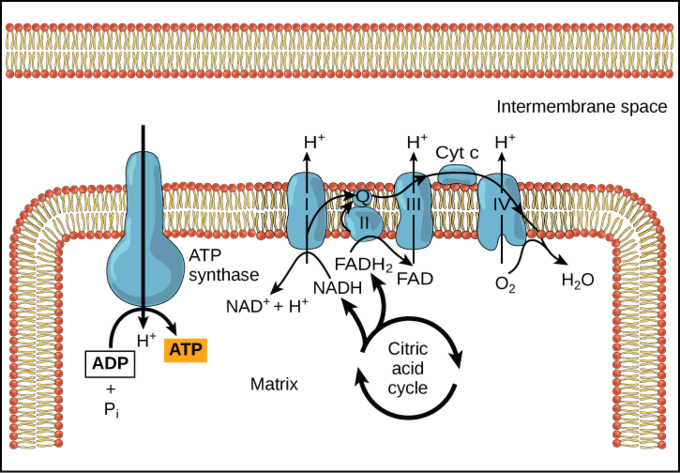
Respiratory gas concentration gradient
In animals, respiratory gases such as oxygen and carbon dioxide form a concentration gradient when these gases differ in concentrations between the blood and the tissue fluid. These gases move downhill across the capillary beds.
Answer the quiz below to check what you have learned so far about concentration gradient.
References
- Nelson, D. & Cox, M. (2013). Lehninger Principles of Biochemistry. New York: W.H. Freeman. p. 403
- RMP: Theory. (2019). Retrieved from Mcgill.ca website: https://www.medicine.mcgill.ca/physio/vlab/rmp/theory_RMP_n.htm
- Concentration Gradients. Retrieved from https://www.mit.edu/~kardar/teaching/projects/chemotaxis(AndreaSchmidt)/gradients.htm
- Beals, M., Gross, L., & Harrell, S. (1999).DIFFUSION THROUGH A CELL MEMBRANE. Retrieved from http://www.tiem.utk.edu/~gross/bioed/webmodules/diffusion.htm
- Nave, R. (n.d.). Active Transport Across Cell Membranes. Retrieved from http://hyperphysics.phy-astr.gsu.edu/hbase/Biology/actran.html
- Chapter 5. Diffusion. (n.d.). Retrieved from: http://people.virginia.edu/~lz2n/mse209/Chapter5.pdf.
© Biology Online. Content provided and moderated by Biology Online Editors







